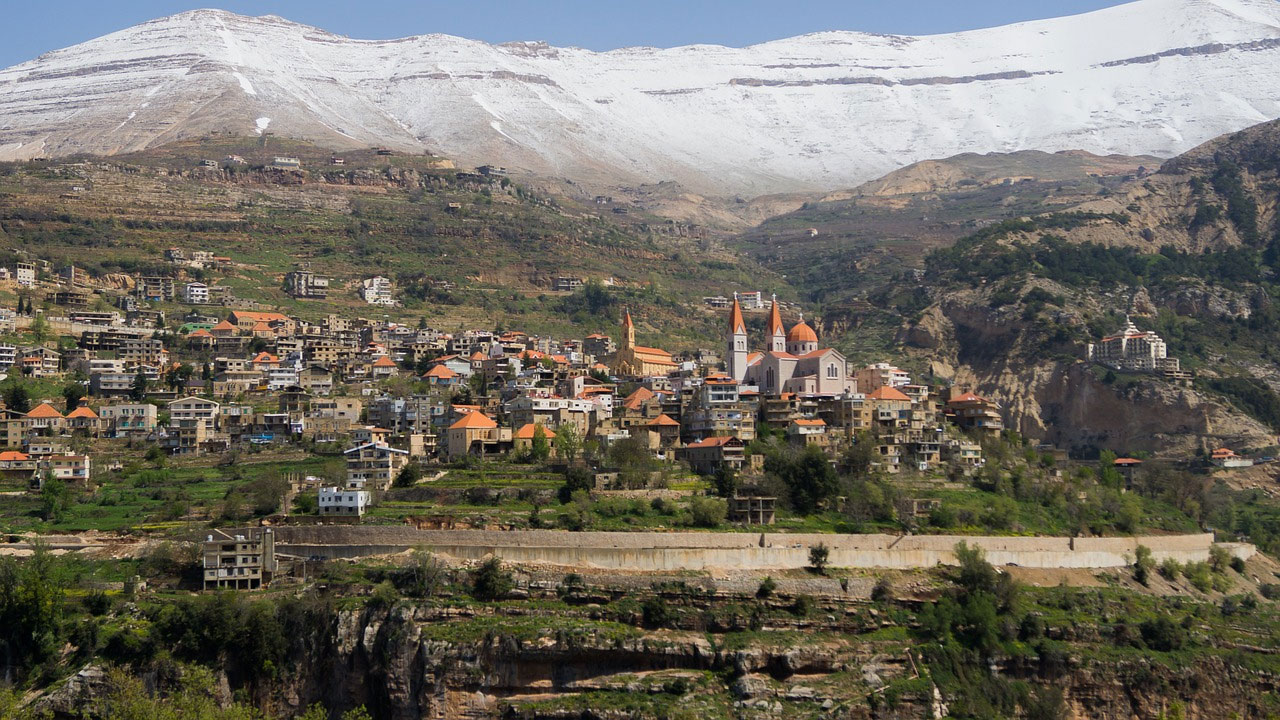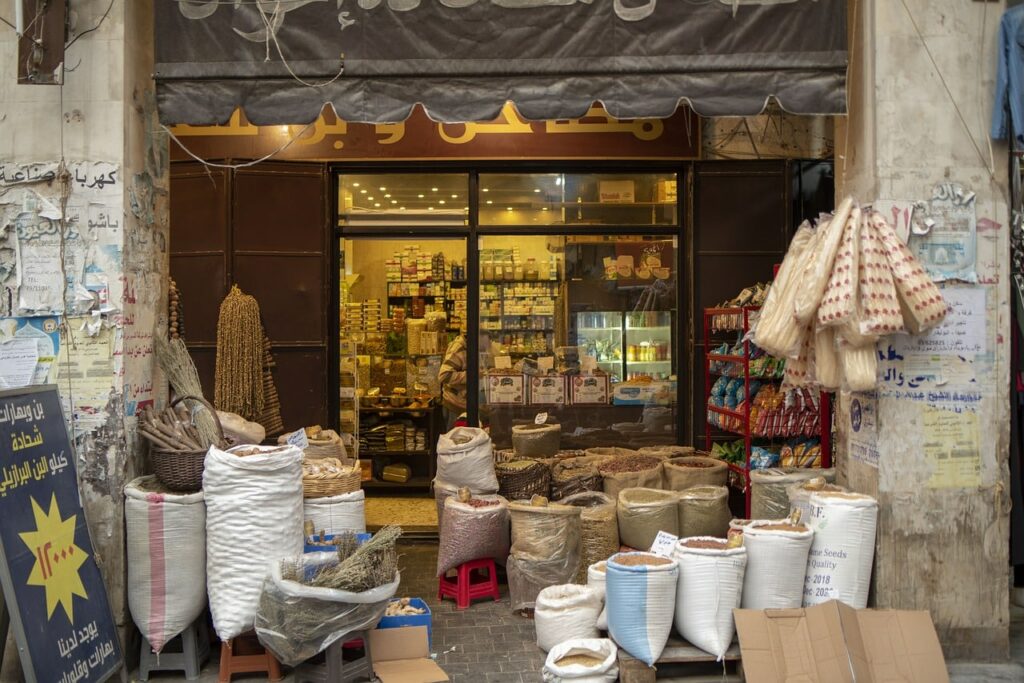Hezbollah: Their History and Agenda

As Iran continues to seek a firmer grasp of power in the Middle East and acts as a major player against Israel, we must look at the proxies through which the regime operates. Hamas has been in the headlines of late since their vicious attack on Israel on October 7, 2023. However, the Iranian proxy in the north, Hezbollah, based in Lebanon, may present an even greater threat. Therefore, let us look to Israel’s northern border.
Lebanon and its capital city, Beirut, were a jewel of the Middle East for centuries. Beirut emerged from the Ottoman Empire as an exceptional city. According to the New World Encyclopedia,
Prior to 1975, the country was considered the banking capital of the Arab world and was widely known as the “Switzerland of the Middle East” due to numerous financial institutions based in Beirut. The city attracted large numbers of tourists, to the extent that it was referred to as the “Paris of the Middle East.”1
Descriptions of Beirut after the establishment of the State of Lebanon in 1943 attracted the wealthy and famous from all over the world. The success and notoriety of the capital city impacted all of Lebanon. “In the fifties, Beirut entered its golden era. For 20 years, [the] capital was a center of international trade and regional finance, and also of education, communication, shipping, and transportation.”2

Lebanon emerged as a nation within a well-defined set of boundaries, both politically and socially.
Politics in Lebanon is based on a sectarian power-sharing structure created on independence from France in 1943. The constitution guarantees all 18 religious sects in the country are ensured representation in government, the military, and the civil service. Reflecting this, the three key government positions of president, prime minister, and speaker must be split between a Maronite [Eastern Orthodox] Christian, a Sunni Muslim, and a Shia Muslim.3
Before the Lebanese Civil War (1975–1990), “Lebanon had been a multi-sectarian country with Shia Muslims occupying the east and south, Sunni majorities living in the coastal cities, Christians mostly occupying the coastal cities and the mountains, and the Druze population living for the most part in the mountains.”4
The Shift Begins: The Roots of Hezbollah
Yet, this ‘pearl of the Middle East’ has been cast into turmoil and despair. It has become the symbol of strife and war. All that was the glory of Lebanon came to a crashing halt with the start of the civil war in 1975. “From 1975 Lebanon had been beset by civil war, a coalition of Arab nationalist, Muslim and Palestinian forces being aligned against a coalition led by Maronite Christians.”5
At the root of Lebanon’s trouble lies Hezbollah (the Party of God). At that time Hezbollah was merely small fraction of the forces involved. They were a Shia minority based in southern Lebanon and southern Beirut. According to Anastasia Filippidou, a senior lecturer in terrorism and conflict resolution at the Cranfield Forensic Institute,
Hezbollah was formed as the military arm [of the strategic axis of Iran and Syria] to project multi-dimensional power. Hezbollah with President Assad the father was a controlled tool for his regional design, and although he never met personally the General Secretary of the party of God, the relationship between Iran and Hezbollah had to go through Syria first for any final decision.6
The later expulsion of the Palestine Liberation Organization (PLO) in August 1982 from Lebanon by the Lebanese cabinet sent shockwaves throughout the Middle East. The beleaguered people of Lebanon thought this might restore their country to normalcy and bring an end to the bloody cycle of violence and the destructive civil war. In the ensuing void, Hezbollah “assumed the mantle of chief resistance force against Israel and Western forces after the Palestine Liberation Organization (PLO) was forced to withdraw from Lebanon.”7 Hezbollah rose to new levels of power supported by the Ayatollahs of Iran and allied with the Syrian regime.
Hezbollah’s Growing Influence and Power – Fighting against Israel
Hezbollah asserted its leadership and presence in southern Lebanon. Since 1992, Hassan Nasrallah led the organization. “Under his leadership, Hezbollah became stronger militarily and thus more capable of resisting and attacking Israel.”8

Hezbollah assumed the role as the ‘protectors of Lebanon’ and opposed the Israeli presence in the south. Hezbollah mounted an ongoing attack against the Israeli forces and carried out a brutal war of attrition. This war continued until May 2000 when Israel unilaterally withdrew to the internationally recognized borders between these two nations.
Hezbollah took this withdrawal as a victory and their leaders were heralded as heroes of Islam and defenders of Lebanon. This was an unfortunate historical event that empowered Hezbollah and left Lebanon very weak. “The sight of Saad Haddad’s statute being dragged through the streets of the Lebanese town of Marjayoun was a sure sign that the South Lebanon Army [SLA] was gone. . . . Thousands of rank and file SLA members and their families followed their commander [Antoine Lahd] southwards to the Jewish State.”9
Facing the future and its relevance, Hezbollah began a hypocritical process of “Lebanonization.” “The concept reflected the deepening of the Lebanonization trend and a real attempt on Hezbollah’s part to endear itself to Lebanese nationals under the pretense that its weapons were intended solely for defense of the Lebanese homeland.”10
The Destructive Purpose of Hezbollah
Hezbollah, as a non-state terror organization supported by their patron, Iran, is committed to the destruction of the state of Israel. In the process, Hezbollah and its leadership have ruined much of what was good and noble in Lebanon. In more recent times, especially since October 7 and the atrocities committed by Hamas in Gaza, the State of Israel has been on the highest level of alert regarding Hezbollah. Hamas and Hezbollah share the same ideals and values, leading to the death of Jewish people and the destruction of Israel.
The battle plans Hamas carried out on October 7 are identical to those found in Hezbollah’s possession several years ago. According to a Reuters report on June 3, 2019:
The Israeli army on Monday showed the inside of a sophisticated tunnel passing deep underground from Lebanon into northern Israel, saying it was intended for use by Lebanese Hezbollah militants. The tunnel was rigged with electrical wiring, fuse boxes and communications equipment. An army spokesman said it began almost a kilometer (mile) away inside Lebanon and reached depths of some 80 meters (265 feet)—about the height of a 22-storey building—as it crossed into Israel, near the town of Zarit.11
The purpose of such tunnels and all the intricate weapons of war is not for the defense of the people of Lebanon but for the death and destruction of the people of Israel. The indiscriminate nature of the terrorism Hezbollah promotes focuses on the harm of Israeli citizens, whether they are Jewish, Arab, Druze, or foreign civilians.

Immediately after the Hamas attacks on Israeli civilians on October 7, the Israeli Defense Forces (IDF) took up defense positions along the northern border of Israel beside its neighboring country, Lebanon. These defensive measures included protecting the Mediterranean Coast from sea incursion and the border communities from rocket attacks. The IDF realized Hezbollah was capable and committed to the same program of death and destruction poured out upon those communities surrounding the Gaza strip.
At the time this article was written, more than 96,000 Israelis had been evacuated from their homes along the Lebanese border.12 The IDF has been on a war footing on the northern border since October 8. There has been a deadly war of attrition between Israel and Hezbollah since then. This continued cycle of violence can break out into a full-scale war without any notice. Such a war spurred on by Hezbollah’s evil design would lead to the death and suffering of thousands of Lebanese civilians and untold number of Israeli citizens, including Jews, Muslims, Christians, and others.
For many, particularly for those from cities in the north, the war seems inevitable—maybe even necessary. Our hope and prayer is for Israeli, Lebanese, and the international leaders to somehow pull us back from the brink of war. We also call for prayer for the people who will suffer to know the peace of the Messiah Yeshua, who lived in Galilee, a city in the north.
Notes
Published on April 26, 2024.
Header photo by Bobby Guidry on Pixabay.
- 1. “Beirut,” New World Encyclopedia, https://www.newworldencyclopedia.org/entry/Beirut. ↩︎
- 2. Ranim Salman, “This Is What Beirut Was Like Before the War,” 961, August 10, 2019, sec. Old Lebanon, https://www.the961.com/this-is-what-beirut-was-like-before-the-war/. ↩︎
- 3. Lina Khatib and Jon Wallace, “Lebanon’s Politics and Politicians,” Chatham House, August 11, 2021, https://www.chathamhouse.org/2021/08/lebanons-politics. ↩︎
- 4. Ayesh Perera, “Lebanese Civil War,” World History Blog (blog), September 30, 2021, https://www.worldhistoryblog.com/Lebanese-Civil-War.html. ↩︎
- 5. Fred Halliday, The Middle East in International Relations: Power, Politics and Ideology, vol. 4, The Contemporary Middle East (Cambridge: Cambridge University Press, 2005), 117. ↩︎
- 6. Anastasia Filippidou, “The Oxymoron of a Benevolent Authoritarian Leadership: The Case of Lebanon’s Hezbollah and Hassan Nasrallah,” Terrorism and Political Violence 34, no. 3 (April 3, 2022): 596, https://doi.org/10.1080/09546553.2020.1724967. ↩︎
- 7. “Hezbollah’s Record on War & Politics,” Wilson Center, October 25, 2023, https://www.wilsoncenter.org/article/hezbollahs-record-war-politics. ↩︎
- 8. James Worrall, Simon Mabon, and Gordon Clubb, Hezbollah: From Islamic Resistance to Government (New York: Bloomsbury Publishing USA, 2016), 157. ↩︎
- 9. “Bitter Retreat for the SLA,” BBC News, May 24, 2000, sec. World: Middle East, https://news.bbc.co.uk/2/hi/middle_east/761817.stm. ↩︎
- 10. Yusri Khizran, “The ‘Lebanonization’ of Hezbollah Has Not Altered Its Commitment to Israel’s Destruction: BESA Center Perspectives Paper No. 2,243” (The Begin-Sadat Center for Strategic Studies, December 10, 2023), 3, https://besacenter.org/wp-content/uploads/2023/12/2243-Khizran-Hezbollah-and-its-obsession-with-weapons-4.pdf. ↩︎
- 11. Reuters, “Tunnel Crossing between Lebanon and Israel Went 22 Storeys Deep,” Reuters, June 3, 2019, sec. World, https://www.reuters.com/article/idUSKCN1T42A7/. ↩︎
- 12. Estelle Shirbon, “Dangerous Stasis on Israel’s Northern Border Leaves Evacuees in Limbo,” Reuters, January 12, 2024, sec. Middle East, https://www.reuters.com/world/middle-east/dangerous-stasis-israels-northern-border-leaves-evacuees-limbo-2024-01-11/. ↩︎
Sign up to receive our email newsletters
Get the latest news from Israel, insights from Dr. Mitch Glaser, international ministry reports, as well as videos and podcasts, downloadable resources, discounts in our online store, and much more!